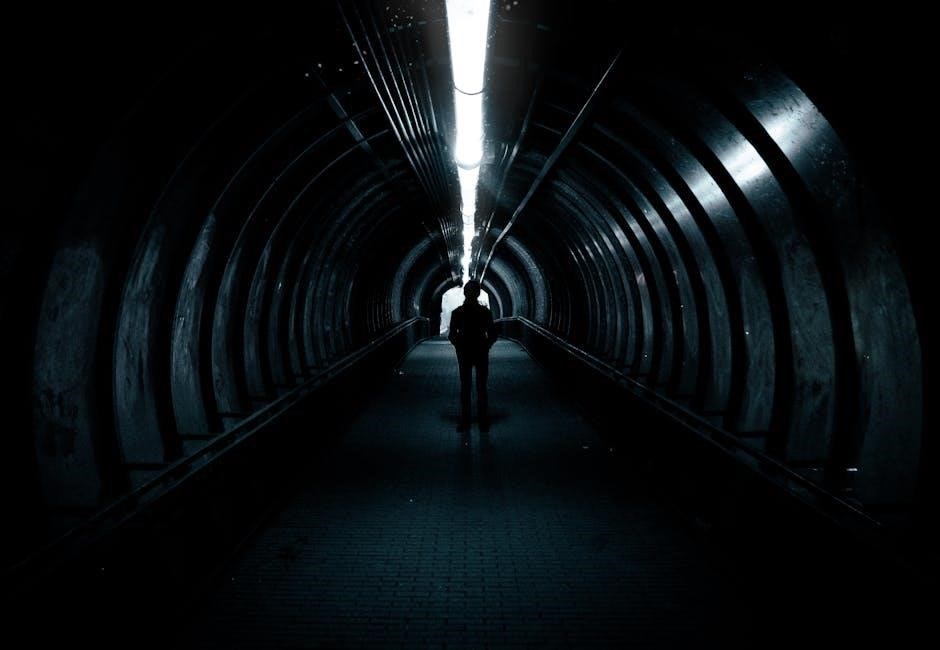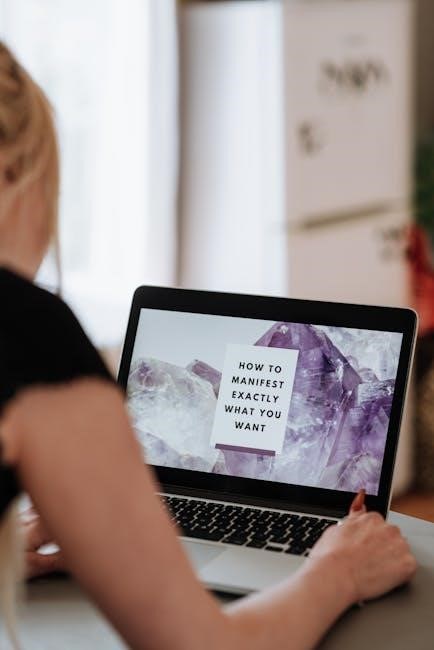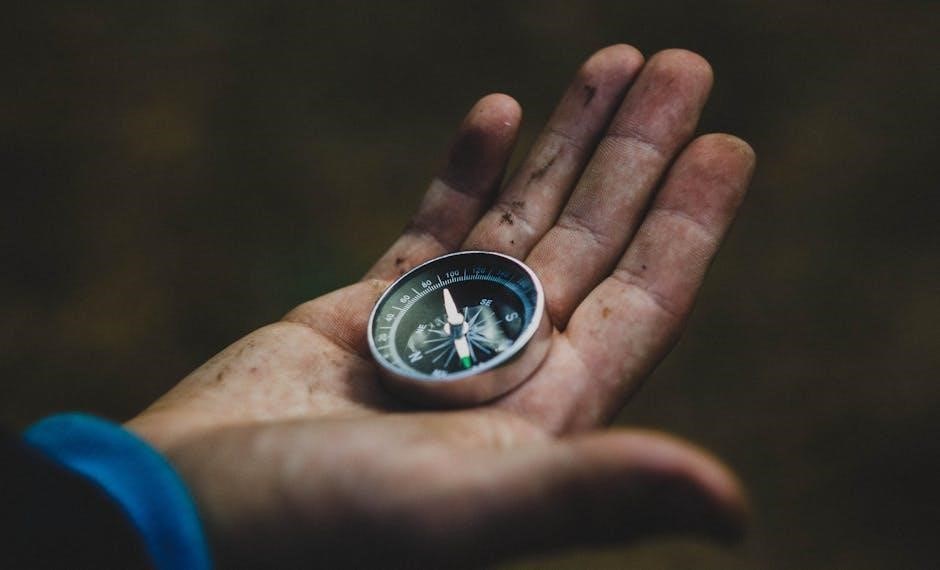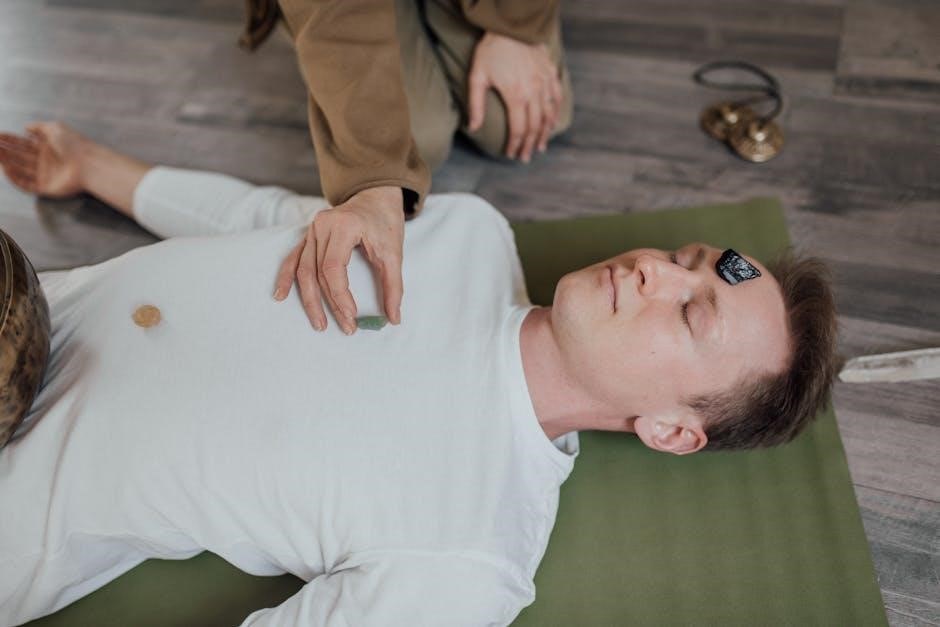The sighted guide technique involves a guide assisting a blind person, providing navigation and support, with the person being guided lightly gripping the guide’s arm above elbow.
Definition and Purpose
The sighted guide is a person or device that assists a blind individual in navigating their surroundings, providing guidance and support to ensure safe and independent movement. The purpose of the sighted guide is to facilitate mobility and accessibility for individuals who are blind or have low vision, enabling them to participate fully in daily activities and engage with their environment. This assistance can be provided by a trained individual, a guide dog, or a specialized device, and is tailored to meet the unique needs and preferences of the individual being guided, promoting autonomy and confidence in their daily lives and activities always with great care.

Benefits of Sighted Guide
Assistance increases independence and confidence for individuals who are blind or have low vision always and everywhere naturally.
Increased Independence
The sighted guide technique enables individuals who are blind or have low vision to navigate through various environments with greater ease and confidence, allowing them to participate fully in daily activities and social events. This increased independence has a positive impact on their overall well-being and quality of life. With the assistance of a sighted guide, they can move freely and safely, making their own choices and decisions without relying on others. The sighted guide technique promotes autonomy and self-reliance, empowering individuals to take control of their lives and pursue their goals and aspirations with greater freedom and independence, leading to a more fulfilling life.

Technique and Tips
Proper guiding technique involves clear communication and trust between guide and individual, ensuring safe navigation and support always.
Proper Guiding Technique
The proper guiding technique is essential for safe and effective navigation. A guide should introduce themselves and communicate clearly with the individual being guided. The person being guided should lightly grip the guide’s arm, above the elbow, to maintain balance and control. The guide should walk at a comfortable pace, avoiding sudden movements, and provide verbal cues about upcoming obstacles or changes in terrain. Clear communication and trust are crucial for a successful guiding experience. By following these guidelines, individuals who are blind or visually impaired can navigate their surroundings with confidence and independence, and guides can provide supportive and respectful assistance, ensuring a positive experience for all parties involved, with mutual respect and understanding.
Communication and Trust
Clear communication and trust are essential for a successful guiding experience always between guide and individual being guided with respect and understanding naturally.
Building Trust and Confidence
Building trust and confidence is crucial in the sighted guide technique, as it enables the individual being guided to feel secure and comfortable.
This can be achieved through clear communication, respect, and understanding, allowing the guide and individual to work together effectively.
The guide should introduce themselves and explain the guiding process, ensuring the individual feels at ease and informed.
By establishing a strong foundation of trust and confidence, the sighted guide technique can be a highly successful and empowering experience for individuals who are blind or have low vision, promoting independence and mobility.

Training and Resources
Guides receive training and access various resources to develop skills and techniques effectively.
Availability of Training Materials
Training materials for sighted guides are widely available, including online manuals and guides, which provide step-by-step instructions on how to assist a blind person. These materials cover various aspects of sighted guiding, such as communication, navigation, and safety. Additionally, many organizations offer training programs and workshops for sighted guides, where they can learn from experienced instructors and practice their skills. The internet also provides a wealth of information and resources on sighted guiding, including videos, tutorials, and blogs. Overall, the availability of training materials and resources makes it easier for individuals to become skilled sighted guides and provide effective support to blind persons. This enables them to navigate safely and confidently in various environments.

Applications and Settings
Sighted guides are used in various settings, including museums, schools, and daily life, providing assistance and support to blind individuals with navigation and mobility.
Guiding in Various Environments
The sighted guide technique can be applied in different environments, such as indoor and outdoor settings, including museums, schools, and public areas. Guides should be aware of potential obstacles and hazards, and communicate them to the person being guided. In addition, guides should also be mindful of the person’s preferences and needs, and adjust their guiding style accordingly. This may involve providing more detailed descriptions of the environment, or offering additional support and assistance. By being flexible and adaptable, guides can help ensure a safe and successful guiding experience in a variety of settings and situations, and provide valuable support to blind individuals. Effective communication is key to successful guiding in various environments.
The sighted guide technique is a valuable tool providing independence and support to blind individuals in various daily life situations and activities always safely.
Importance of Sighted Guide Technique
The sighted guide technique plays a crucial role in enabling blind individuals to navigate safely and independently. This technique allows guides to provide assistance and support, promoting confidence and trust. By using this method, blind individuals can participate fully in various activities and situations, including social events, educational settings, and daily life tasks. The importance of the sighted guide technique lies in its ability to facilitate equal access and opportunities for blind individuals, fostering inclusivity and independence. Effective implementation of this technique requires proper training, clear communication, and a willingness to adapt to individual needs and preferences, ensuring a positive and empowering experience for all involved, with benefits extending beyond physical mobility to emotional and social well-being.

No Responses